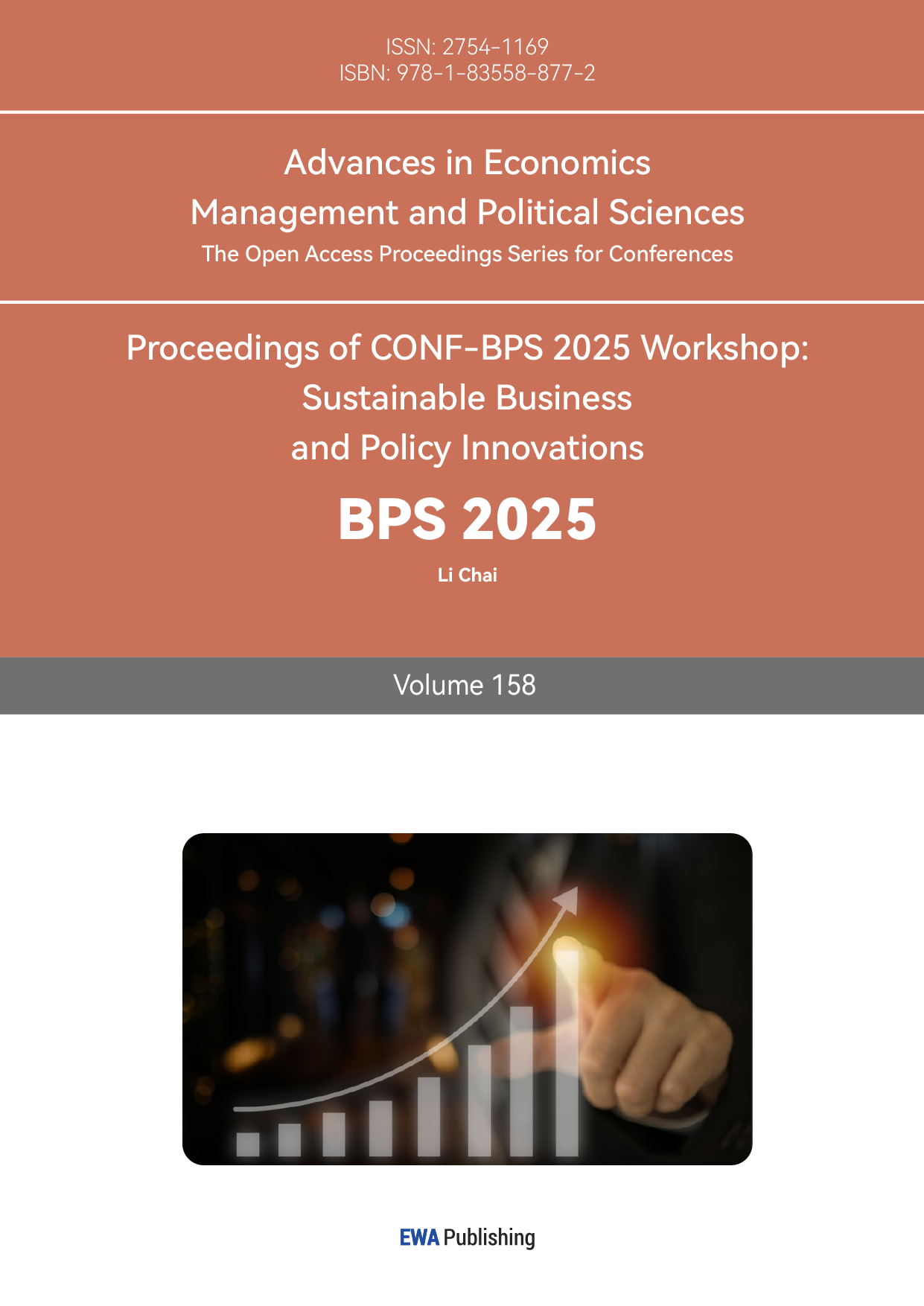1. Introduction
Finding a method to substitute fossil fuels for vehicle power is becoming more and more crucial in the twenty-first century due to the severe problems of carbon dioxide emissions and the scarcity of fossil energy [1]. Electric vehicles, as an example of new energy vehicles, are crucial for mitigating the energy crisis and lowering pollution levels in the environment. The global electric vehicle market is projected to achieve sales of around 14 million units in 2023, with an anticipated increase to approximately 17 million units by the conclusion of 2024, representing over 20% of total global vehicle sales [2]. China, Europe, and the United States represent the foremost markets for global electric vehicle sales, with China comprising over 60% of total sales worldwide. However, compared with traditional fuel vehicles, it is still slightly young and will have a lot of development in the future. Therefore, this article will discuss the current situation and development of electric vehicles from many aspects. This article will discuss the current development status, future trends, potential challenges, and opportunities of electric vehicles, in order to provide direction and predictions for the further development of electric vehicles. The research in this article is conducive to laying the foundation for the study and prediction of the future development trend of electric vehicles and finding the technical problems to be solved in the future.
2. Current Status of Electric Vehicle Development
2.1. Major Electric Vehicle Manufacturers and Products
The current status of electric vehicles is that, in 2023, cumulative sales of Chinese brand passenger automobiles reached 14.596 million units, reflecting a 24.1% rise, with a market share of 56% [3]. Among domestic brands, 52 automobile brands produce new energy passenger vehicles, with 187 new energy models on sale. Among them, BYD and Tesla are the leaders in the new energy vehicle industry. China, Europe, and the United States are the main markets for global electric vehicle sales. Figure 1 illustrates the car ownership distribution by main car owner groups in Denmark and Sweden [3].
2.2. Technology Status and Market Analysis
Electric vehicle technology continues to advance, especially in battery technology. Solid-state batteries have received widespread attention as an emerging technology and are expected to enter the market in small quantities starting in 2025. At the same time, intelligent driving technology and Internet of Vehicles technology have provided new growth points for the pure e-vehicle market. During the initial three weeks of April 2024, the penetration rate of China's new energy vehicle market reached 49.25%, indicating that new energy cars have achieved significant advancements in the Chinese market and have emerged as a crucial component of the automobile sector [3].
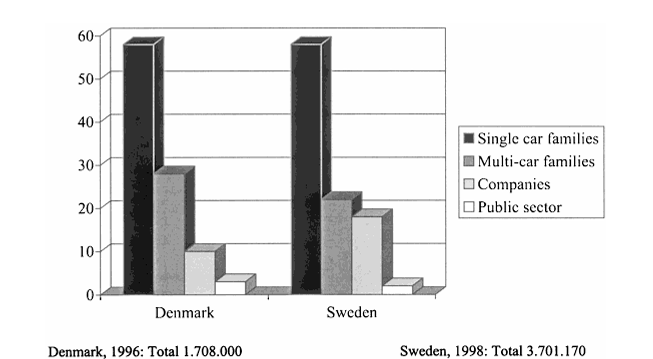
Figure 1: Car ownership distribution by main car owner groups in Denmark and Sweden: Percentage [3].
3. Technological Innovation and Development Trends
Technological innovation is the forces in promoting the improvement of electric vehicles. The current main development trends include:
Fast charging technology: The development of fast charging technology is the key to solving the problem of charging convenience for electric vehicles. It shortens charging time by increasing charging power and optimizing battery management systems.
Autonomous driving and intelligent network technology: The development of autonomous driving technology and the application of Internet of Vehicles technology have provided new functions and services for electric vehicles, improving driving safety and comfort. In the "New Energy Vehicles" and "Industrial Development Plan (2021-2035)", the Chinese government emphasized electrification, connectivity, and intelligence as the direction of the development of the automobile industry. For instance, V2G. V2G can significantly mitigate issues related to low grid efficiency and variations in renewable energy, while simultaneously providing advantages for electric vehicle users. The engineering and economic advantages of V2G are persuasive. Classifying V2G implementation approaches into four categories facilitates the adaptable selection of methods based on varying objectives. The four principal issues of V2G pertain to four essential technologies: V2G intelligent scheduling technology, intelligent charge and discharge management technology, power electronics technology, and battery management technology. Simultaneously, device integration, enhanced efficiency, and reduced cost are critical avenues for advancement. In the future, it will undoubtedly integrate with smart grids and progress towards the trends of intelligence and informatization [4].
Internet of Vehicles and Intelligent Transportation Systems: Through Internet of Vehicles technology, vehicles can communicate with transportation infrastructure, other vehicles, and the cloud to achieve more intelligent and efficient traffic management(as shown in Figure 2).
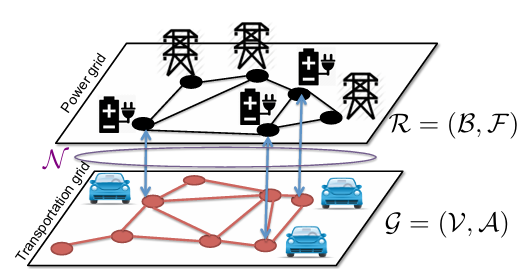
Figure 2: Electric vehicles impacting transportation and power delivery networks[5]
Safety issues: With the popularity of electric vehicles, their safety issues have also received increasing attention. The Ministry of Science and Technology stated that it will strengthen research on high-safety power battery technology and safety early warning technology.
Hydrogen fuel cell technology: Hydrogen fuel cell vehicles, as a category of new energy vehicles, are both clean and efficient. The Ministry of Science and Technology has proposed to advance research on hydrogen fuel cell devices and onboard hydrogen storage technology. Scientific researchers are committed to developing new electrolytes and separator materials. These new materials must not only have excellent ionic conductivity to ensure the stability of the battery during high-rate charge and discharge processes, but also have good chemical stability and thermal stability to guarantee the safety of the battery under various limiting conditions [6].
International cooperation and competition: On a global scale, China's automobile industry not only faces the challenge of internal technological breakthroughs, but also faces international market competition and cooperation.
Although it is still a long road for electric vehicles to replace traditional fuel vehicles, it requires major breakthroughs in materials to achieve it. In the near future, the main progress may still concentrate on new generation of lithium-ion battery materials. The further development and practical industrial application of high-nickel cathode materials, silicon anodes and solid electrolytes will bring a new atmosphere to the driving range and safety performance of electric vehicles [7].
4. The Current Impact of Electric Vehicles on the Market and Economy, and the Possible Impact in the Future
Chinese automakers account for more than half of the world’s electric vehicle output and have obvious cost advantages and technological development (improvement of batteries and reputation of e-vehicles). The new energy automobile industry has injected new momentum into China's economic development, showing strong market vitality and development potential.
4.1. Possible Impacts of Electric Vehicles
New opportunities in sinking markets: As the growth rate of first-tier markets slows down, sinking markets will become new opportunities for the development of new energy vehicles, and second- and third-tier cities will become new growth engines.
Improvement of charging infrastructure: The anticipated development of supporting infrastructure, including charging stations and battery swap facilities, together with technological advancements, is likely to further encourage consumers to opt for new energy cars. Eg, increased investment, smart grid development, standardization and interoperability, urban planning, and zoning changes.
Further expansion of the market: China is expected to become the most competitive new energy vehicle market in the world. The market will usher in a major reshuffle of the industry in the next 5-10 years, and independent brands are expected to further develop into global electric vehicle brands(Figure 3).
Adjust China’s energy utilization structure: Automobiles are one of the main consumers of relatively scarce petroleum resources in our country. The evolution of electric vehicles can make balanced use of various forms of energy resources and greatly improve energy utilization efficiency. It is important for adjusting our country's energy use structure and ensuring the future of the country. Energy security plays a very important role. Finally, the development of electric vehicles can drive the automobile industry to achieve leapfrog development [8].
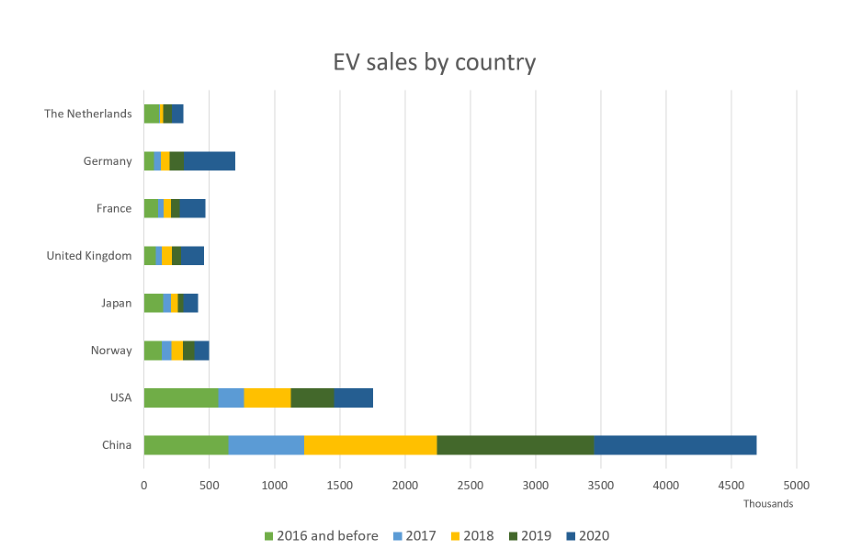
Figure 3: Changes in global electric vehicle sales [9]
4.2. Environmental Impact
Reducing greenhouse gas emissions: Electric vehicles can effectively reduce CO2 emissions throughout their life cycle. Compared with traditional internal combustion engine vehicles, the emission reduction is approximately 18% to 42%. With the advancement of clean power production, the greenhouse gas emission reduction benefits throughout their life cycle will continue to be amplified.
Improving air quality: Electric vehicles have lower emissions during the fuel cycle, helping to reduce urban air pollutant concentrations such as PM2.5 and NO2, thereby improving air quality and bringing health benefits.
Promoting the use of renewable energy: Encourage the sharing and integration of information between new energy vehicles and renewable energy power forecasting systems, coordinate the energy utilization of new energy vehicles and the coordinated dispatch of wind power and photovoltaic power generation, and increase the proportion of renewable energy applications(Figure 4).
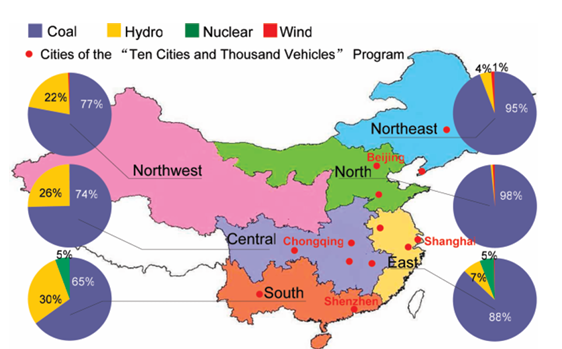
Figure 4: The Power generation structure of six major inter-provincial power grids in 2008 [10]
5. Discussion
China's automotive production and sales are anticipated to have consistent growth in 2024, with new energy vehicle production and sales projected to reach over 11.5 million units, reflecting a year-on-year increase of roughly 20%. Given that the majority of contemporary traction machines utilize permanent magnet motors, advancements are being made in the development of permanent magnet motors characterized by elevated specific power and high power density. This tendency is anticipated to persist, especially with the advancement of permanent magnet motors to enhance reluctance torque, which appears to be a logical domain of engagement [11].
Problems need to solve
Consumer Perception Awareness: Educating consumers about the benefits of EVs, including environmental impact and cost savings.
Range Anxiety: Addressing concerns about the range of EVs and the availability of charging options.
Regulatory Challenges
Policy Frameworks: Developing supportive regulatory frameworks that encourage EV adoption and infrastructure development.
Emissions Standards: Aligning regulations with the goals of reducing greenhouse gas emissions.
6. Conclusion
The conclusion highlights that the future of electric vehicles is set for significant expansion propelled by swift technology advancements and advantageous market conditions. Significant progress in battery technology, including enhanced energy density and accelerated charging capabilities, will boost electric vehicle performance and attractiveness to consumers. Furthermore, the enhancement of charging infrastructure and its connection with renewable energy sources would alleviate obstacles to adoption. As government policies increasingly favor sustainability, the automotive sector is expected to see significant investments and a shift toward electrification. Ultimately, the convergence of these factors positions electric vehicles as a cornerstone of sustainable transportation, with the potential to significantly reduce carbon emissions and reshape the automotive landscape. This article mainly analyzes and discusses the future development of electric vehicles based on existing literature data. In the future, the author will use specific models and relevant data to address specific issues related to the charging efficiency of electric vehicles.



